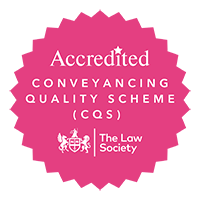A recent case should act as a warning to landlords after the validity of a residential service charge demand was considered by the Upper Tribunal.
In the case of Tedla v Cameret Court Residents Association Ltd [2015] UKUT 221 (LC) the landlord’s agents served demands on a leaseholder which contained the name and address of both the management company and the landlord however, it was unclear which of these companies was the landlord.
The Upper Tribunal concluded that it is insufficient to simply state the name and address of the landlord on any written demand. In order to be a valid demand in circumstances where the names and addresses of two companies are included on a demand, the landlord needs to be identified.
Many landlords may already know that in order for a demand for rent or other sums to be valid, it must contain, not only, the name and address of the landlord but it should also clearly identify the correct landlord.
The case is a reminder to landlords that all residential service charge demands must comply with the terms of the lease and with a number of statutory requirements.
If a demand is non-compliant, the service charge will not be due and payable by the lessee until the landlord fulfills his contractual and statutory obligations.
To prevent difficulties when attempting to recover service charges from tenants, follow our team’s top tips:
1. Ensure that your demands contain the information prescribed by statute
Section 47 Landlord & Tenant Act 1987 provides that demands should include;
- the Landlord’s name and address and if that address is not in England and Wales an address at which notices may be served on the landlord by the tenant.
- Of note, if a Right to Manage company is demanding payment make sure you insert the landlord’s details as well as the RTM address for service.
Section 21B of the Landlord & Tenant Act 1985 and Section 153 of the Commonhold & Leasehold Reform Act 2002
- A Summary of Tenants’ Rights and Obligations should accompany all demands. There are separate summaries for service charges and administration charges. If you are demanding both make sure you send both.
- Of note, the font size of your summary should be no smaller than 10 point.
2. Review the lease and identify if there is anything further that needs to be included in your demand.
3. Ensure that your demands are correctly addressed i.e. to the proprietors named within the title register. This will mitigate the risk of tenants arguing that the charges have not been demanded because his/her name or address was spelled incorrectly.
4. If a landlord is demanding service charges following completion of works or provision of the service, it has 18 months from the cost being incurred to serve a demand for payment. Failure to do so may mean that the landlord cannot recover the cost.
5. Remember- it is possible to rectify a failure to serve a compliant demand, simply serve a fresh demand.
Landlords who require advice on this topic or any other Long Leasehold Dispute Resolution matter can contact a member of WHN’s dedicated LLDR department which specialises in residential property disputes of this kind.
Contact Eleanor Cornthwaite at our Bury office on 0161 761 4611













